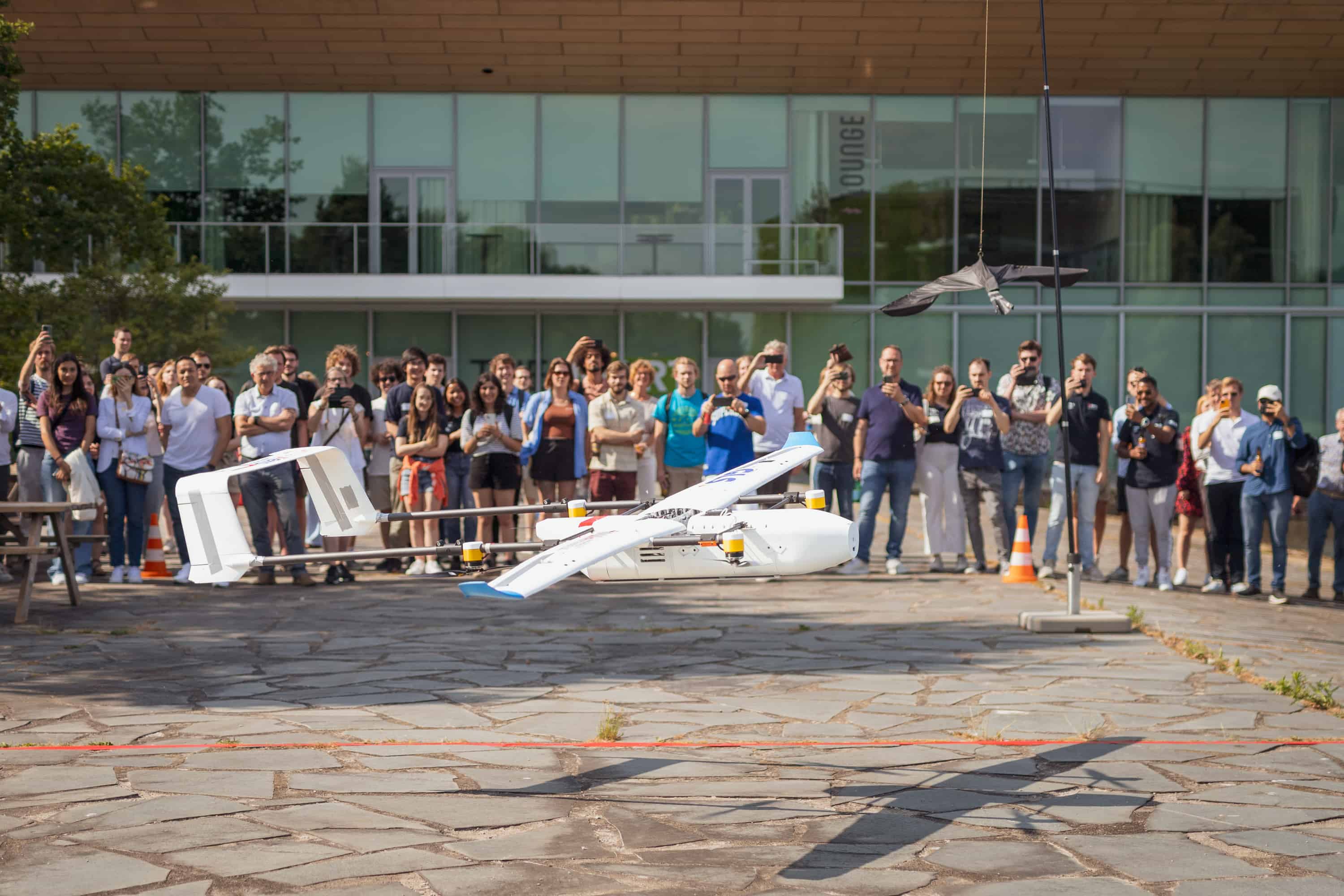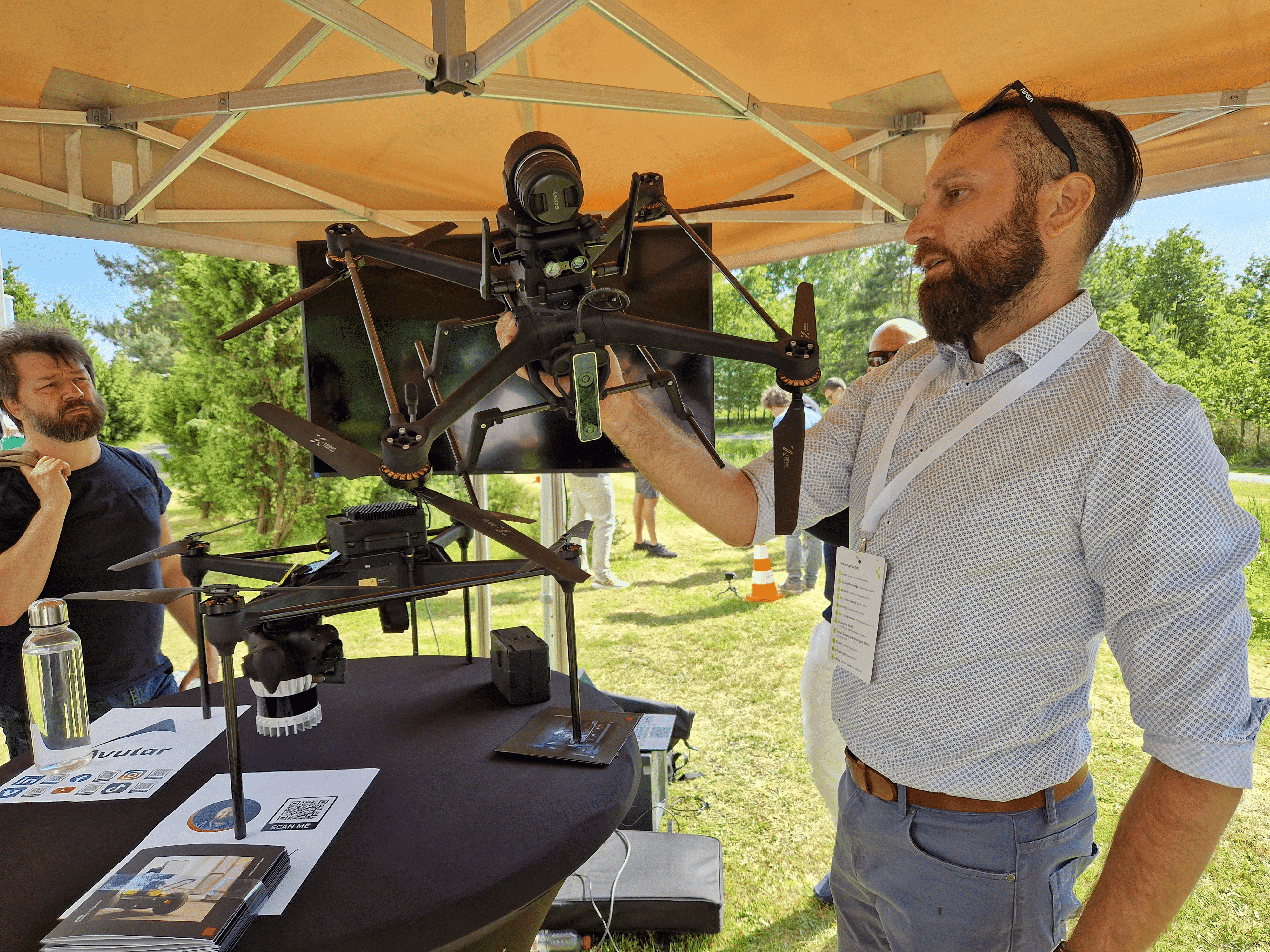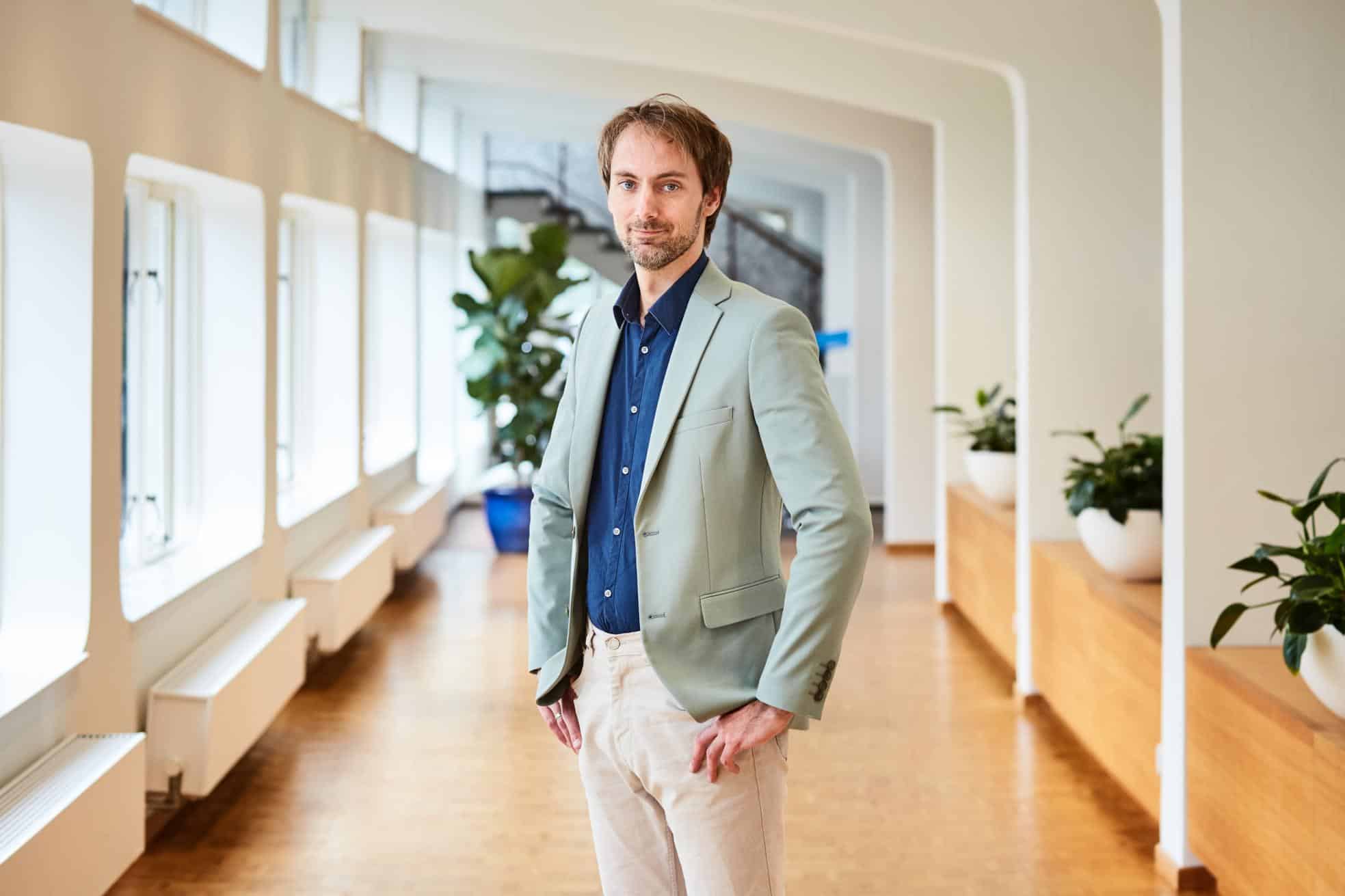
At Aero Team Eindhoven, Eindhoven University of Technology (TU/e) students are working on the development of an autonomous drone network. Up to this point, it sounds like a sensible but not particularly revolutionary plan. However, it is. This is because the student team wants to replace the batteries of cargo drones in mid-air rather than on land. “Our goal is to show that swapping a battery is a good option as a way to increase the range of cargo drones,” Bram Schut says. He put his master’s in data science and artifical intelligence on hold for a year to focus full-time on his position as Team Lead.
Package drones: short flight time and tricky landing
“Our main sponsor is the parcel service GLS. They want to fly back and forth between distribution centers with drones. But there are two reasons why that this is not really doable right now. The first problem is that drones are not capable of staying in the air for long periods of time. The second problem is that package or cargo drones are quite large. In order to land, they either need a runway, or you have to fly them into a net. So, right now it’s inconvenient and time-consuming to swap batteries.”
In-air battery swap
Aero Team Eindhoven’s plan is to build expressways between distribution centers. If a drone’s battery is empty midway, charging stations are located on those expressways. Tiny drones fly to the cargo drone from there with a new, full battery. They clip on to the larger drone and swap the battery in mid-air. ‘In-air battery swap‘ is what we call that. Basically, we are trying to imitate kerosene tankers that fuel airplanes in flight. The drones that fly to the cargo drone with the battery are small, very mobile and have much more flexible landing options.”
This concerns the transportation of urgent packages, such as medication or pacemakers for hospitals. Aero Team also wants to offer private parcel services the option to deliver a package on the same day in a green way. A cargo drone carrying a two-kilogram package flies about seventy kilometers per hour and can keep that up for an hour and a half. With battery swaps in the air, the range of cargo drones will become endless.
Blue Jay and Syfly
The Aero Team was born out of a merger of two separate student teams: Blue Jay and Syfly. Blue Jay was formed in 2016, when a number of students wanted to have an indoor drone deliver beer to guests during the university’s 70th anniversary celebration. “Every year, they set a new goal. But last year, the genie was kind of out of the bottle,” Schut notes.
Basically, we are trying to imitate kerosene tankers that fuel airplanes in flight. The drones that fly to the cargo drone with the battery are small, very mobile and have much more flexible landing options.”
Bram Schut
At Syfly, they developed a fixed wing drone that was capable of making weather forecasts. Unfortunately, the Royal Netherlands Meteorological Institute (KNMI) wasn’t really keen on that and that project also came to an end. “But, we didn’t want to quit. The teams had a lot of in-house knowledge. So we came up with Aero Team Eindhoven. The idea is that we no longer develop a new drone every year that can do a trick and then winds up on the shelf. This really is a bigger project that we are spreading out over several years.”

Aerodynamics, AI and mechanics
The project is currently in the prototype phase. By the end of this academic year, the cargo drone should be airborne and the charging station installed. Inside an office on the High Tech Campus in Eindhoven, 21 students are working hard to achieve this goal. They are doing this in various sub-teams. For example, one group is testing how the drones can fly routes autonomously and how battery swap drones can land as precisely as possible with the help of artificial intelligence. Another sub-team is working on the mechanical aspect of swapping batteries. In this, the main question is how to swap the battery on the smallest possible surface area. A number of students are also looking at aerodynamics and what drone shape works best. Schut: “We want a flat top or bottom in any event so the other drone will be able to land on that.”
VR experience
The team is also part of the VR Experience consortium. In early December, the High Tech Campus, Fontys, the ROC and Stadslab will begin a joint project where they will explore in which places in Eindhoven there is room to fly drones. Participants will use VR glasses to stand in different places in Eindhoven – the main market, a residential area or a meadow. They can then adjust all sorts of parameters: how many drones are in the air, how big they are, how much noise they make and how high they fly.
The idea behind this is to figure out up to what altitude drones are tolerable. “We want to know how the general public will react to more drone traffic. This will hopefully allow us to eventually be able to ease regulations, because the rules are very strict right now. That makes testing very complicated for us, and a lot of companies that want to do more with drones are also running into this.”








